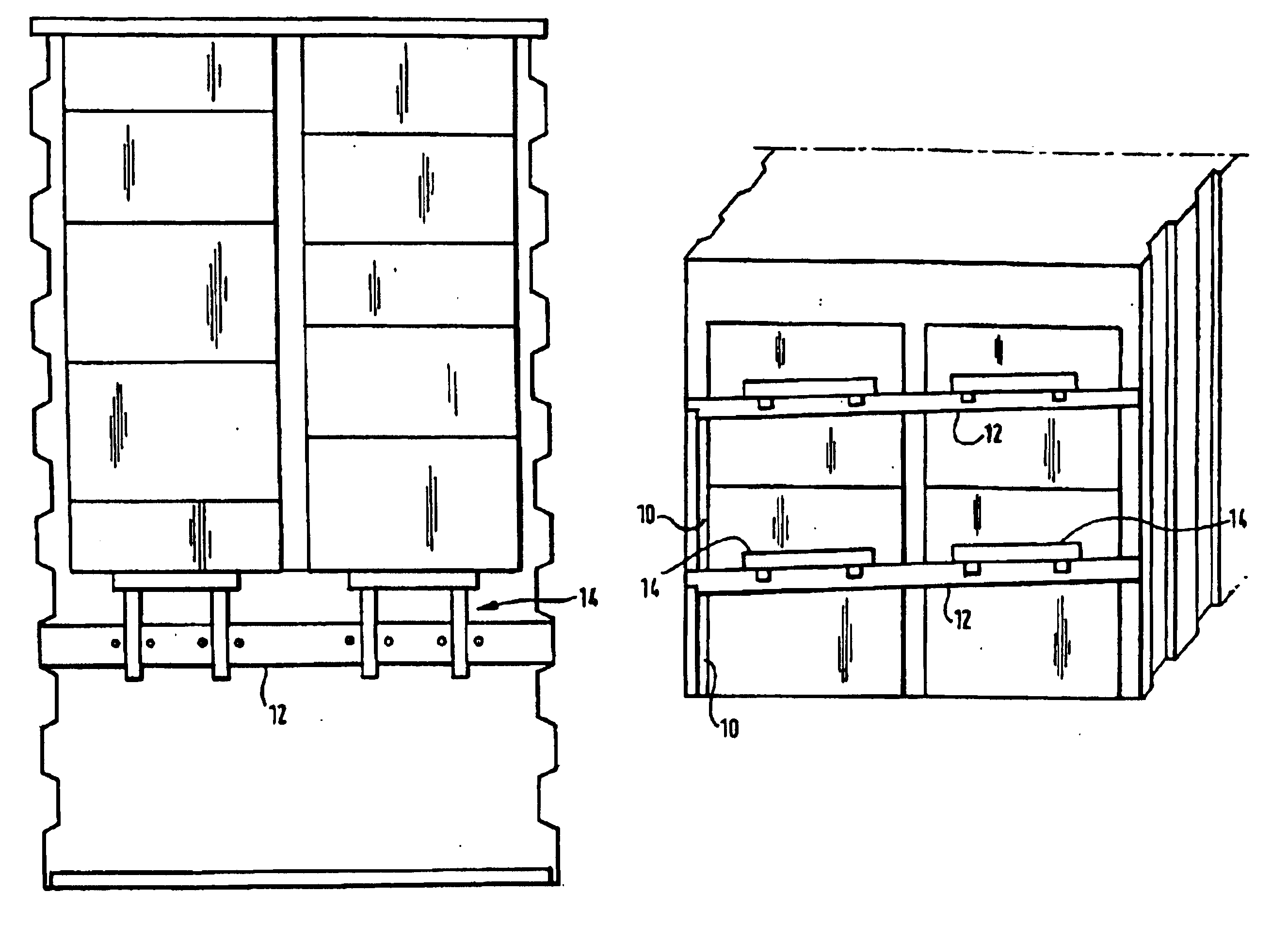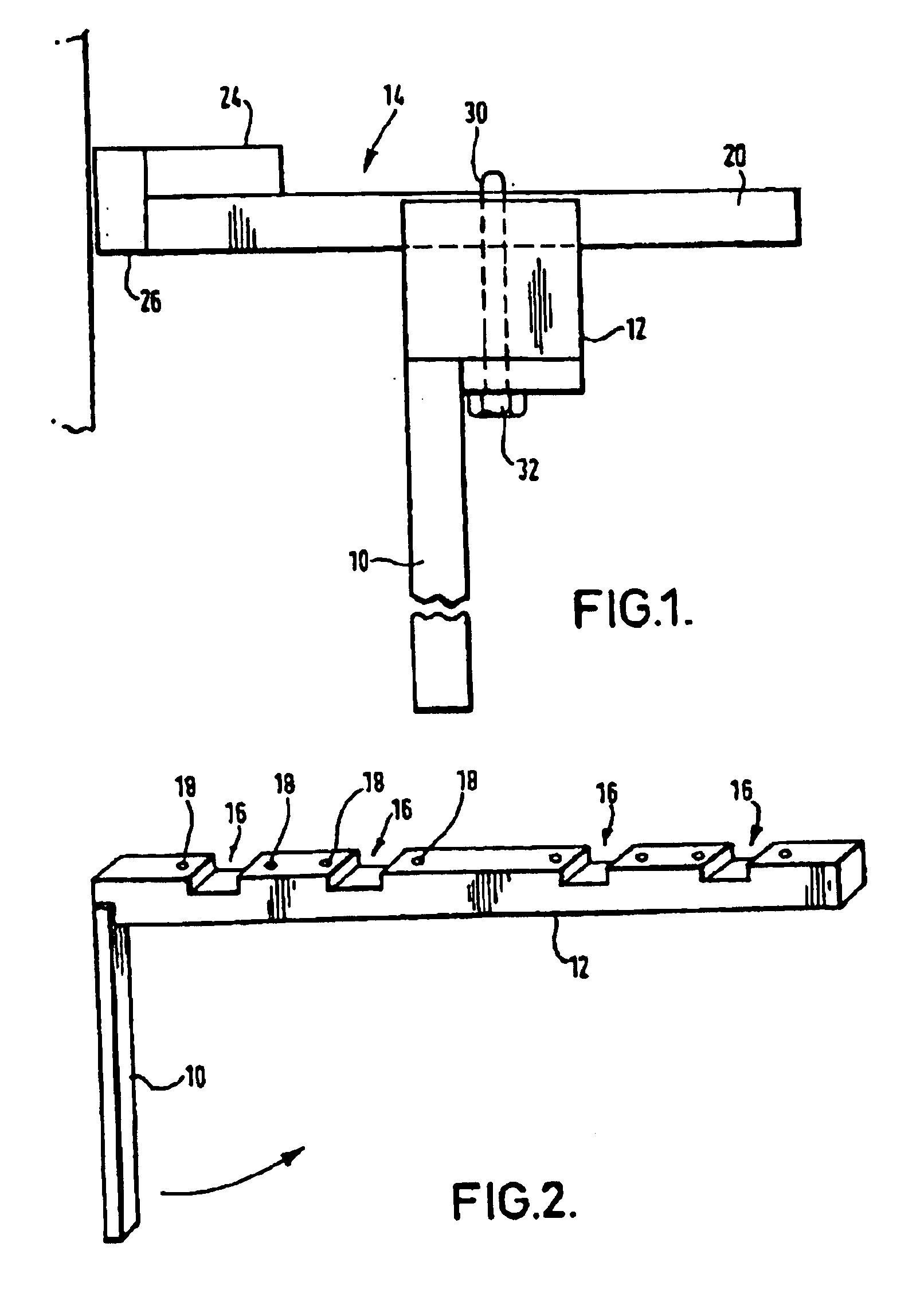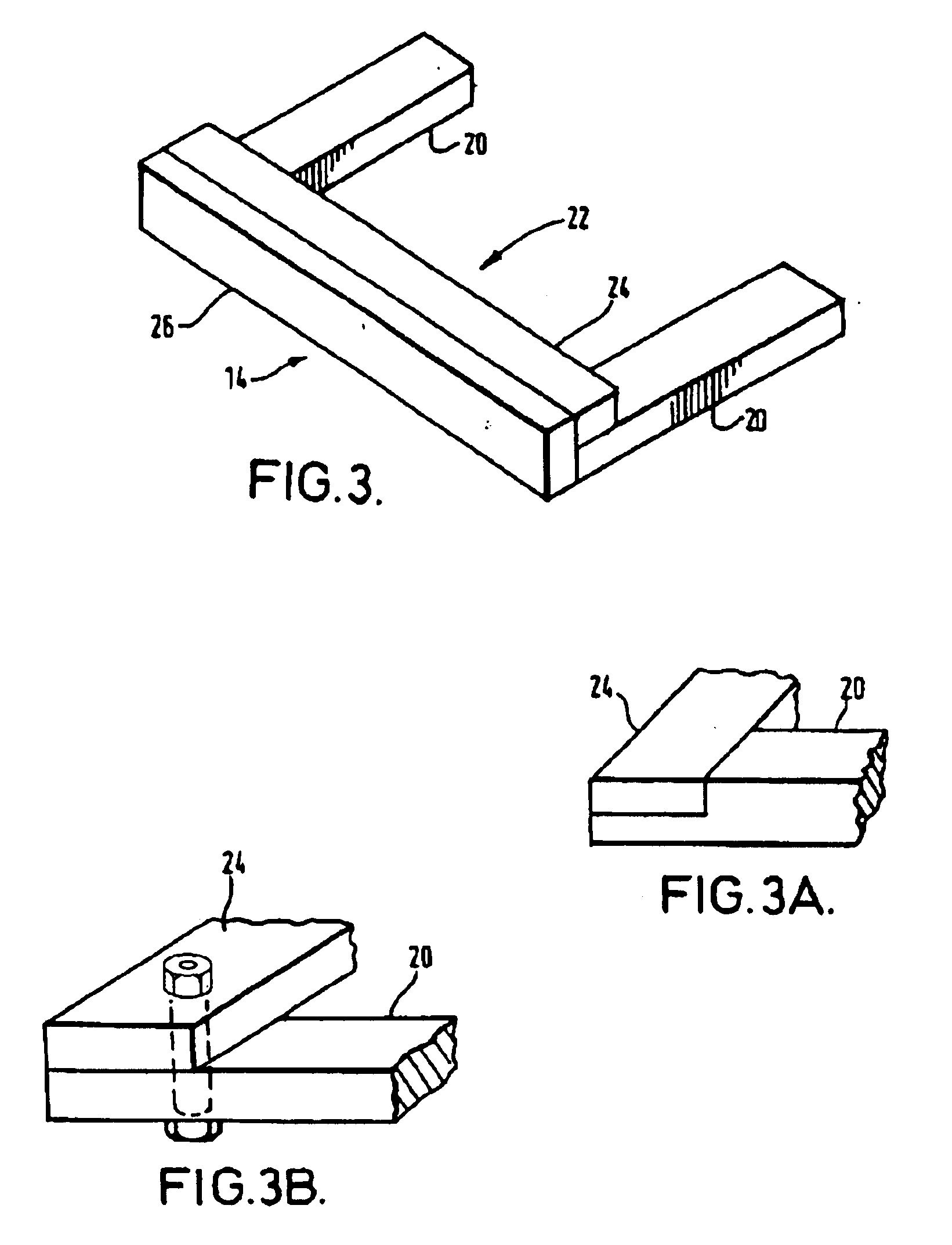Load restraints
- Summary
- Abstract
- Description
- Claims
- Application Information
AI Technical Summary
Benefits of technology
Problems solved by technology
Method used
Image
Examples
first embodiment
With reference first to FIGS. 1 to 5, a load restraint being a first embodiment will now be described.
The load restraint comprises a support member 10, a transverse member 12 and a load support 14. Each of these components can be formed from timber or fabricated from steel or other metal, as is convenient.
The support member 10 is a straight beam that has a flat lower end surface and a stepped upper end surface. The length of the support member is less than the height of a container into which it is to be used, and less than the height of a load that it is intended to restrain. (In embodiments that are made of wood, the height can easily be lessened by cutting the support member as required.)
The transverse member 12 is rectangular section a beam of length slightly greater than the width of the container into which the restraint will be installed. An end surface of the transverse member 12 is formed with a step that fits into the corresponding step at the top of the support member 10....
second embodiment
With reference now to FIG. 6, in the invention, the support member 110 and the transverse member 112 are interconnected by a hinge.
In a first modification to the embodiment described above, the support member 10 and the transverse member 12 are interconnected by a flexible fabric or metal hinge 140. The hinge 140 allows the two members to be folded such that they overlie one another; a convenient configuration for storage.
In this embodiment, instead of grooves 16, rectangular slots 116 are formed through the transverse member 112. Bolt holes 118 are formed through the transverse member 112 to intersect with each of the slots.
To install a load restraint of this embodiment, the legs 120 of the load support 114 are inserted through the slots 116 in the transverse member before the support member 110 and the transverse member 112 are installed in the container. After installation, the load restraint 114 is pushed against the load. The installer then inserts a drill into the bolt bole 11...
PUM
 Login to View More
Login to View More Abstract
Description
Claims
Application Information
 Login to View More
Login to View More - R&D
- Intellectual Property
- Life Sciences
- Materials
- Tech Scout
- Unparalleled Data Quality
- Higher Quality Content
- 60% Fewer Hallucinations
Browse by: Latest US Patents, China's latest patents, Technical Efficacy Thesaurus, Application Domain, Technology Topic, Popular Technical Reports.
© 2025 PatSnap. All rights reserved.Legal|Privacy policy|Modern Slavery Act Transparency Statement|Sitemap|About US| Contact US: help@patsnap.com



